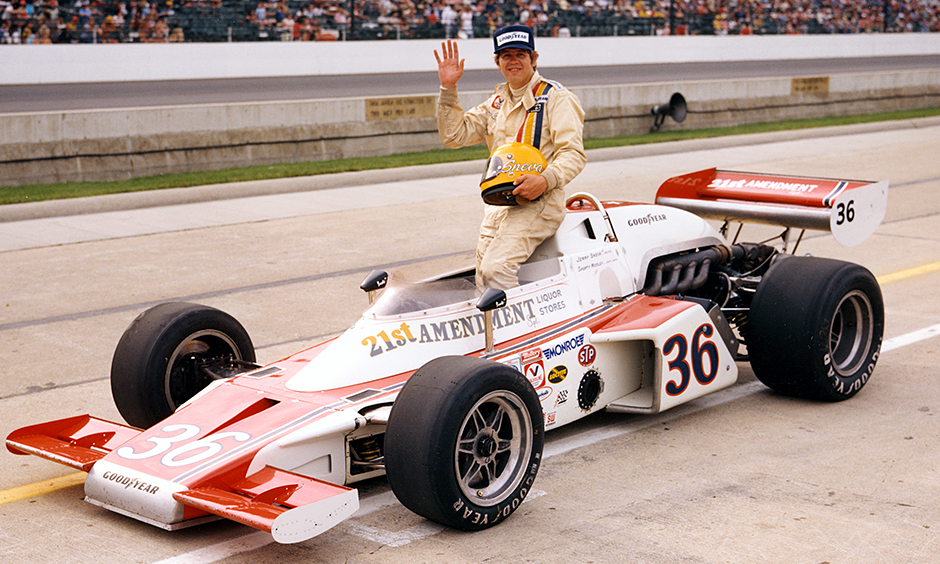Former Indy 500 rookie of year Jerry Sneva passes away
JAN 29, 2018
Jerry Sneva, the 1977 Indianapolis 500 Rookie of the Year, died Saturday at age 69.
Sneva, a younger brother of 1983 Indianapolis 500 winner Tom Sneva, made five career starts in the Indy 500, with a best finish of 10th place in his rookie run of 1977. His best start was an impressive fifth in 1980.
Never blessed with the finest equipment, Sneva had to swap rides at the last minute in 1975 to complete his rookie test, not exactly with seconds to spare on the last assigned day for tests, but rather after being gifted with a couple of extra minutes by a senior official who took compassion on the struggling team and turned a blind eye to the clock.
Sneva went on to start in 28 Indy car races, placing in the top 10 six times. Two weeks after finishing fifth at Milwaukee in June 1979, Sneva posted his best career finish with a fourth in the Pocono 500. He finished the 1979 season seventh in points.
Sneva was one of a dozen or so drivers who came to the Midwest via a very competitive supermodified series in the Pacific Northwest called the Canadian-American Modified Racing Association. Other notable drivers from that series included Tom Sneva, Art Pollard, Billy Foster, Jim Malloy, Dick Simon, Eldon Rasmussen and Cliff Hucul.
Jerry Sneva made his United States Auto Club debut on Aug. 26, 1973, as a substitute for his brother when Tom had to miss the first of two days of sprint car racing at the Minnesota State Fairgrounds in St. Paul because he was in California qualifying for the following week’s Ontario 500. Jerry jumped into Carl Gehlhausen’s highly controversial rear-engine sprint car for the day, qualified for the main event and finished second.
There have been many entertaining “off-track” anecdotes concerning the easygoing Jerry Sneva, but none comes anywhere close to overshadowing the sheer drama generated by his Indianapolis 500 qualifying attempt in 1979.
Originally assigned to Bruce Crower’s stock-block Chevrolet, Sneva was waiting on the sidelines on the morning of the rain-threatened third qualifying day while a mechanical issue was being repaired.
In the meantime, the turbocharged AMC-powered car of Warner Hodgdon was ready to go but waiting for its driver to arrive.
The Hodgdon car was assigned to stock car standout Neil Bonnett, who had taken the assignment while temporarily “between rides” on the NASCAR circuit. In the meantime, Bonnett had been hired to drive for the Wood Brothers, and having passed his rookie test at IMS, was at Dover, Delaware.
Attempting to do “double duty,” Bonnett’s revised plan had been to qualify at Dover, fly back to Indianapolis to qualify Saturday for the Indy 500 and then return to Dover.
Dover’s Sunday race date meant qualifying at Indianapolis on Saturday was imperative for Bonnett. Unfortunately for him, there was a rain delay in Dover, and he was still waiting to qualify there before attempting to scurry back to Indianapolis by the end of the day.
Sneva, who was still waiting for work on the Crower car to be completed, was asked if he wouldn’t mind taking the Hodgdon AMC car out for a “shakedown” run. Sneva was more than willing, but a look down the lengthy qualifying line told the crew it would be quite a while before they could expect to get on the track.
They put their heads together and concluded that their best opportunity for any track time would be to join the end of the line. Eventually they could go out and take the available warmup laps (three in those days rather than two), NOT take the green and then return to the end of the line for another shot later without having been charged with an attempt.
Sneva went out, took the three allowable laps and then returned to join the end of the line as planned. By the time he went out for the second time, evidently some successful adjustments had been made, because at the end of the third warmup, Sneva was given the green flag to start a qualifying attempt.
Jaws dropped as he ran through the four qualifying laps at an average speed of 184.379 mph, making the starting lineup for his third straight “500.”
Sneva explained afterward that the throttle had stuck open on the car and that he had “driven with the kill switch,” flipping it off upon entry to the turns and switching it back on when it was time to accelerate.
Why take such an unbelievable risk instead of coming in for repairs?
“Had to make the show,” Sneva said with a chuckle. “If I went ahead and got it in before Bonnett got back, I figured it would have made it harder for them to take me out and put him in for the race, considering he was a rookie and I had previous starts.”
As it turned out, Sneva didn’t need to take such a dramatic risk. The weather further delayed Bonnett in Dover, so he stayed there for the weekend, won the race and ended up with a full-time ride with the Wood Brothers.
Sneva lasted only for 16 laps in the race that year, but he had made the show again, and for someone who made their living driving race cars, it made for another most welcome payday.
Long since relocated from Spokane, Washington, to Indianapolis, Sneva was regularly seen in neighborhood hangouts and in the IMS Museum and gift shops throughout the year. He formed many longstanding friendships with IMS staff members, and every December for years, he’d stop by to drop off wooden Christmas ornaments he had carved and painted for them himself.
Sneva is survived by his wife, Kathy, and children TJ and Shelby.






















